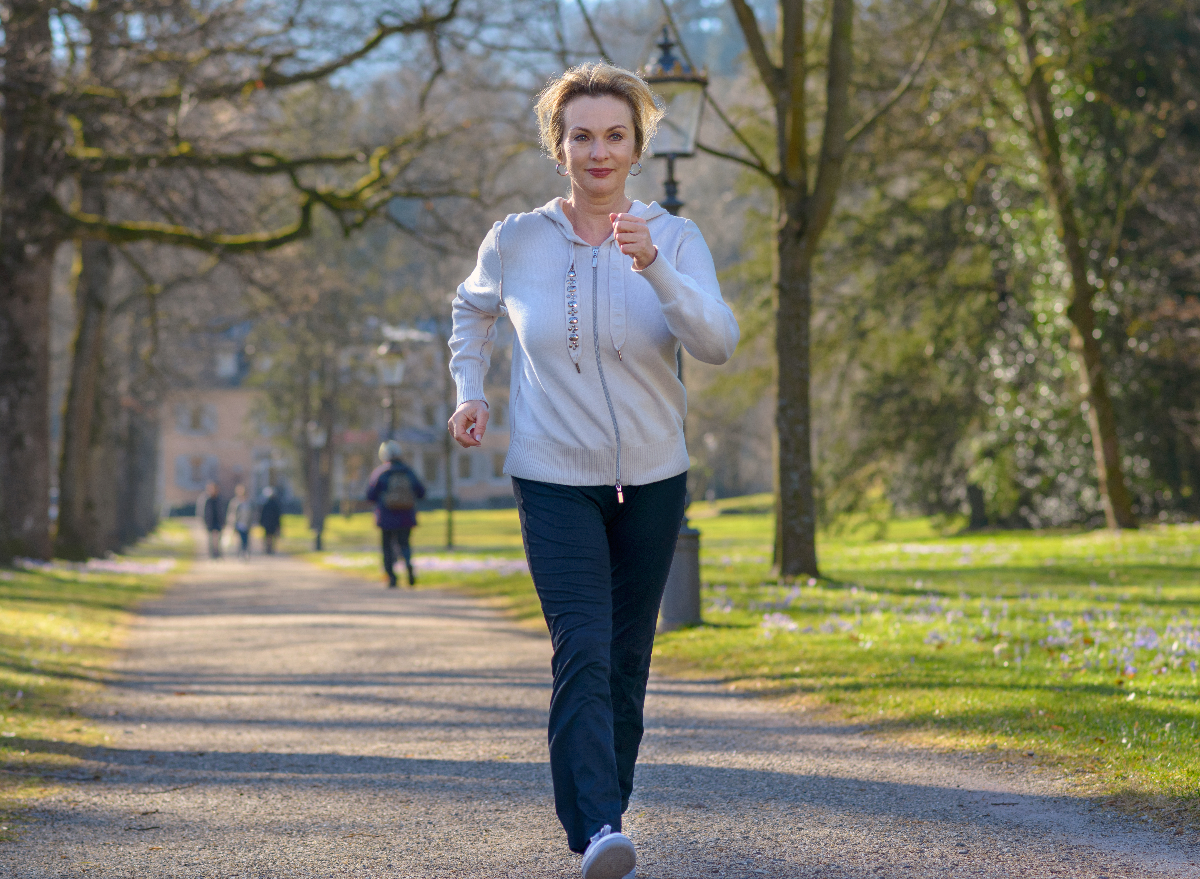What a Daily Walking Habit Does to Your Body After 50, Says Science

If you want to learn one of the absolute best ways to improve your overall fitness and reach great health at 50 and beyond, it's by foot. This low-impact, weight-bearing form of physical activity is something you can do wherever you are, and whenever it's most convenient for you. Going for a walk is also a great time to get into the good old outdoors for some fresh air and stellar scenery. All you need to get started is a supportive pair of well-fitting athletic shoes and a water bottle to stay hydrated while taking those strides! Read on to learn exactly what a daily walking habit does to your body after 50, according to science.
Taking a brisk walk for an easy 30 minutes each day has extraordinary health benefits. And the more time you spend walking, the merrier your overall wellness will be. If you're wondering what a daily walking habit does to your body after 50, the list of goodness is truly endless. Some of the benefits include decreased body fat, enhanced balance, stronger bones and muscles, a decreased risk of suffering from stroke and heart disease, and a boost in your endurance and cardiovascular fitness, according to Better Health Channel.
Not only is going for a walk an extraordinary stress reliever, but it's also excellent for your joints, Shape reports. It can be quite a social activity, which is always a solid gift of self-care. "Walking can decrease your stress levels by giving you a break from your daily stressors and helping you become more mindful," explains psychotherapist Courtney Glashow, L.C.S.W., founder of Anchor Therapy LLC (via Shape).
Related: Slim Down and Get Toned With This 15-Minute Walking Workout
A study performed on inactive women revealed that minimal weekly exercise noticeably boosted their fitness.

The more steps you take, the better your overall health will be. A study performed on inactive women revealed that performing minimal exercise each week—a simple 75 minutes—noticeably boosted the level of fitness for each participant, compared to the non-exercising participants who were observed (via Better Health Channel). Another study published in the Health Promotion Perspectives journal found that going on a brisk walk for an even quicker 10 minutes can give you a mood boost.
According to Sharon Gam, Ph.D., C.S.C.S., exercise physiologist and certified strength and conditioning coach (via Shape), your leg muscles on the front side do most of the work when you're walking at an incline, and your leg muscles on the back side are working when you walk downhill. Building up your leg strength and endurance typically makes performing all daily activities so much easier. Working on enhancing your leg strength by going on walks and lowering your risk of compromised health conditions heightens your ability to live a more independent, confident lifestyle through your 50s and beyond.








